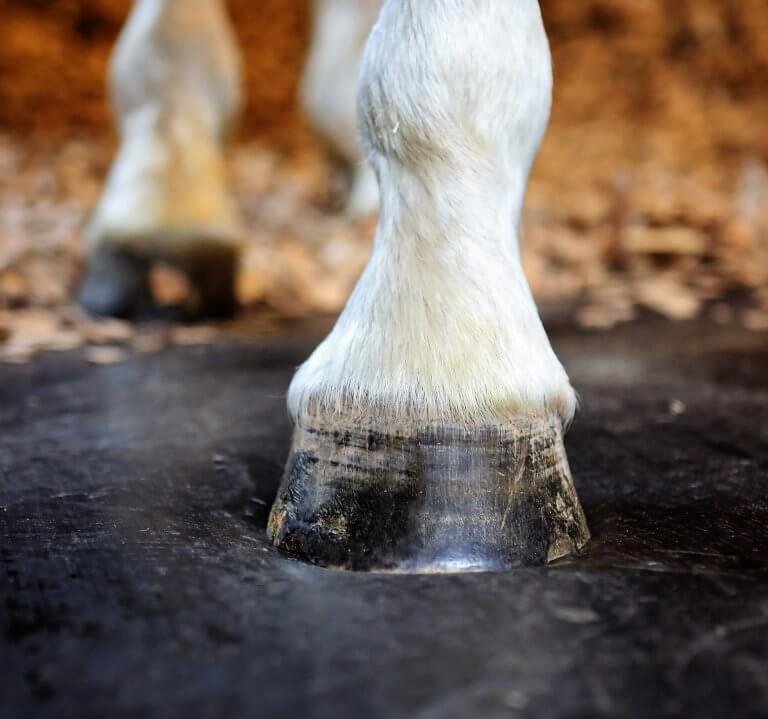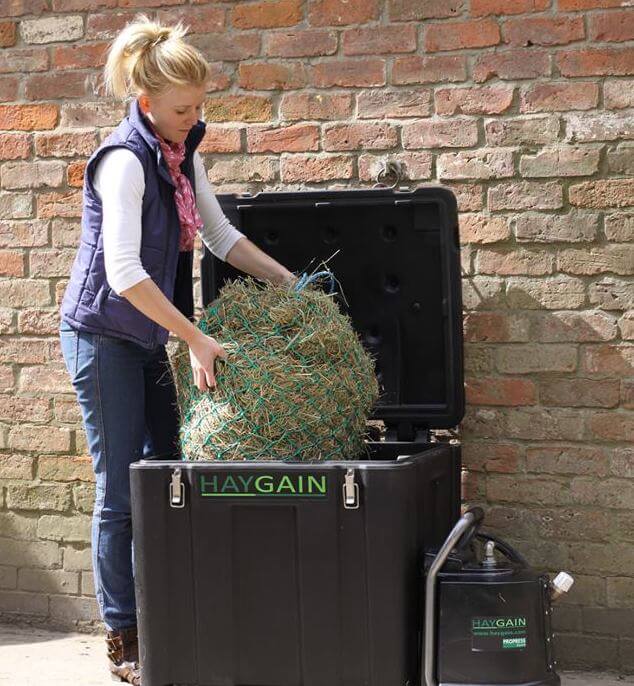It is commonly but sadly an incorrect assumption that training and exercise improves lung function and therefore respiratory health. The heart is a muscle and therefore does get bigger and stronger with training and exercise, but the lungs do not. The only way you can try to improve the respiratory function of your horse is to ensure that they are kept in an environment that promotes good respiratory health. Dr David Marlin explores.
The evolution of the horse to become an athlete
The power and elegance of a horse at full gallop is quite breath-taking, and it one of the reasons people around the world watch equestrian sport and learn to ride. Horses are the fastest of the large land mammals and have evolved to be quite remarkable in their athletic ability, especially if you consider that they evolved to graze most of the day and sprint for short distances when danger arises.
The horse has long legs with little weight at the foot and muscles on or very close to the trunk, a high proportion of muscle (40-50% in breeds such as Quarter horses, Thoroughbreds and Arabs), a large heart (around 1% of bodyweight, so 5kg in an average 500kg horse) and last, but by no means least, an impressive respiratory system and large lung capacity. All of this means they are easily able to carry a rider weighing 10% of their total body weight and still move at top speeds of 35mph.
These adaptations give us wonderful insight into why horses are such consummate athletes and useful pointers for how to look after them.
How does the respiratory system work?
The horse is an obligate nasal breather which means that, unlike a human, they cannot breathe through their mouth – only their nostrils. The upper airways consist of the nostrils, nasal passages, pharynx, larynx and the trachea, an oval tube around 80cm long with around 50-60 rings of cartilage to prevent it collapsing inwards. As the trachea enters the lungs inside the ribcage, it divides into two large bronchi, one for the left lung and one for the right. These bronchi then divide again and again within each lung to provide multiple airways, each one leading to alveoli. The airways and alveoli at this level in the lung are so small they have a tendency to collapse inwards, something that is prevented by surfactant, which works like a lubricant to reduce surface tension.
This whole system is designed to move air into the lungs and into contact with the membrane in the alveoli, where diffusion of oxygen from the airways (highly concentrated) to the blood (less concentrated) takes place. This oxygen binds to haemoglobin in red blood cells and is pumped all around the body by the heart. At the same time, carbon dioxide, a waste product of respiration, is diffused back into the lungs from the bloodstream to be expelled into the atmosphere upon exhalation.
Oxygen is used by the horse’s body to generate energy, but, depending on the intensity of the exercise being carried out, the respiratory system’s contribution may or may not be significant.
The respiratory system’s contribution to performance
From rest to walk, walk to trot, and then trot to canter, the horse will simply take more breaths in order to deliver the increased oxygen required by the muscles for activity. However, at canter and gallop the healthy horse will take one breath in time with each stride, a process known as respiratory-locomotor coupling.
Instead of breathing by expanding and contracting their chest, the process of inhalation and exhalation during respiratory-locomotor coupling is driven by the movement of the diaphragm and the internal organs sitting behind it which is dictated by stride pattern. The longer the stride, the deeper the breath and the longer the horse has got to fill its lungs with air. When the horse is cantering or galloping in rhythm, this helps them cope with higher intensity exercise for extended periods of time, however a stumble after a fence may cause them to feel slightly winded as the air is suddenly and rapidly forced out of their lungs.
The production of energy from food sources, known as respiration, is a cellular-level chemical reaction and can be aerobic or anaerobic depending on the intensity of exercise and availability of oxygen. Aerobic respiration occurs when exercise is at a moderate level and the body can take in enough oxygen to supply the required energy, for example when out hacking and travelling at a working trot. Anaerobic respiration will occur when the body is unable to take in enough oxygen to provide the required energy, for example during a short sharp gallop.
Despite the fact that anaerobic respiration can occur without oxygen, the respiratory system is still vitally important for a horse to perform intense exercise. Even in a sprint race 60-70% of energy will be generated aerobically, and so correct respiratory function is still critical. Setting aside respiratory disease and allergies, there are other respiratory health issues which may affect the horse. Upper or lower airway issues, such as roaring dyspnoea and exercise-induced pulmonary haemorrhage (EIPH) will all physically impact the horse, but can also make them back off their work as they may give the animal the sensation of being unable to breathe.
Optimising respiratory function for performance
It is commonly-held but sadly an incorrect assumption that training and exercise improves lung function. The heart is a muscle and therefore does get bigger and stronger with training and exercise, but the lungs do not. The only way you can try to improve the respiratory function of your horse is to ensure that they are kept in an environment that promotes good respiratory health.
There are multiple factors that can compromise the health of the horses’ respiratory system, such as pollen, stable dust and mould spores in forage, which can lead to both chronic conditions with obvious symptoms and low-level sub-clinical respiratory disease that may go unnoticed. Both have a significant impact on the performance of the animal affected, indeed after musculoskeletal injuries disorders of the respiratory system are the most prevalent issue limiting the career of the performance horse.
The Haygain Steamer and Haygain Forager Slow Feeder are both designed to help promote good respiratory health, making them a must-have for any performance yard serious about preserving good lung function in their charges. Their newly-launched flooring system is also designed with respiratory health in mind, eliminating cracks that traditional rubber mats have between tiles that enable the build-up of harmful ammonia. You can browse the whole Haygain product range here: https://haygain.co.uk/
With thanks to Dr David Marlin and Haygain for their knowledge and expertise.
Search
Recent Articles
- The Good, The Bad and The Ugly of Coaching
- Does your horse need more energy, especially when competing?
- Grade 1 International Para Dressage Rider Di Green- Why Lexi Needed a Year Off
- Louise Blanch – Driving Towards New Horizons with the Continued Support of the Para Equestrian Foundation.
- Kissing Spine – Prevention or Cure?
Categories
- Advice Hub
- Athlete
- Carriage Driving
- Dentistry
- Dressage
- Endurance
- Eventing
- Farrier
- Featured
- Featured Horse Ads
- Featured Posts
- Horse Racing
- Horse's Mouth
- Horseball
- Hunting
- Le Trec
- Leisure Riders
- Mounted Games
- Nutrition
- Polo
- Polocrosse
- Reining
- Rescue & Rehabilitation
- Show Jumping
- Showing
- Tack Room
- Team Chasing
- The Pony Club
- Therapy
- Training
- Vaulting
- Veterinary





